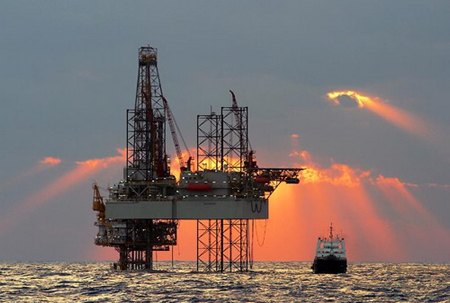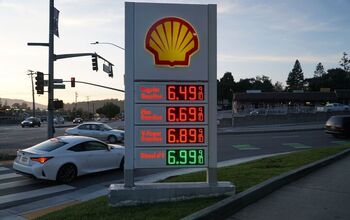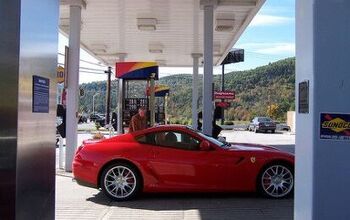Gas Prices 101
When gas prices spike, hands are wrung and fingers are pointed. A frantic, politically volatile search for the "cause" of the whole mess follows. With gas prices hovering round the $3 mark and enough carping to please a Tennessee fishing tournament; the question has entered the forefront of our national consciousness. The answer, for once, isn't supply, though there are some logistical hiccups involved. Oil (and thus gas) prices are climbing to new heights as a result of two "highs": high-demand and high-finance.
High-demand is easy to understand, and even pleasing in a backhanded sort of way. Capitalism has won the economic war; a lot of the little economies are picking up (including the sleeping dragon surrounded by all those "tigers"). More factories and more cars equal more demand, demand exceeds supply, price goes up. It's basic economics. So did all those Chinese buying cars cause this? (A small fraction of a billion plus is still huge). Well yes, partially, but there's also the financial angle.
Oil may be the lifeblood of you car, your "lifestyle," the country's economic well-being and the future of the Republican Party, but to a commodity broker it's… a commodity. Brokers trade just about anything that qualifies as "raw materials" on global commodities markets: oil, grain, gold, pork bellies, orange juice, wool, etc. A lot of these materials are produced without an existing order. So, rather than holding onto the inventory, the producer sells it to a broker, who then sells it to a buyer (when one can be found) for a higher price (he hopes).
To simplify the transaction and avoid "taking delivery," most commodities trading is done in "futures." Instead of actually buying a commodity, the broker promises to buy it in the future at a fixed price. The broker then turns around and sells the future to a manufacturer/end user, or to another broker. Does your head hurt yet?
In normal practice, this whole convoluted process helps smooth out price fluctuations and ensures that commodity production runs smoothly. The brokers make a small profit for their role and get called parasites– or worse (they don't mind, this goes back millennia). The process starts to get "interesting" when the supply/demand equation changes (e.g. when demand for crude oil increases). When the market goes nuts, fortunes can be made and lost in minutes. [Remember "Trading Places"? Those guys were brokers.] Things get really wild and crazy when brokers buy futures from other brokers, and then sell them to yet other brokers.
This fraternal futures trading can drive prices up rather impressively; with an increasing "pool" of investment a "bubble" can develop. True bubbles are terrifying, resulting in huge price hikes and massive losses to whomever ends up without a chair when the music stops. Fortunately, a true "oil futures bubble" is unlikely.
The sheer size of the oil market keeps it out of tulip bubble territory. There's a whole lot of money going into oil futures right now, but it's a drop in the barrel compared to the total size of the market. There are simply not enough "churners" to overbid enough "burners" to REALLY make things crazy ($4 a gallon isn't crazy, just scary). Also the supply of oil is not fixed (at least for the next 50-100 years). If prices stay high long enough, more expensive forms of extraction become economically viable, bringing more oil to market, filling demand and lowering prices.
We haven't seen any major increases in oil drilling recently because the present price situation is not steady enough. This will change, but it takes time. Once additional supply comes on-line, prices will stabilize, most likely at a higher price than before (oil prices have been rising about 11% a year for some time). This is called a "market correction." At that point, gas prices will return to their normal fluctuations around this new price point, and things will remain calm… for a while.
Bottom line: despite GM CEO Rick Wagoner's assertion that gas prices are about to fall, I'd wouldn't bet on it. The chances are high that gas prices will remain between $3 and $4 a gallon for the short term, and then slowly decrease. Given increasing demand, we may never see sub-$2 a gallon gas again.
We can't blame the drillers, and we really shouldn't blame the new drivers. My heart goes out to anyone who pays what a car costs in India or China, much less the local gas prices. This fluctuation truly is "the price of freedom". Lastly, we must tip our hats to the commercial parasites known as oil brokers. Like many other parasites, they help us digest things we can't handle ourselves. Even if they "cost" us occasional indigestion and nausea, at least they give us gas.
More by Andrew Dederer
Latest Car Reviews
Read moreLatest Product Reviews
Read moreRecent Comments
- Brendan Duddy soon we'll see lawyers advertising big payout$ after getting injured by a 'rogue' vehicle
- Zerofoo @VoGhost - The earth is in a 12,000 year long warming cycle. Before that most of North America was covered by a glacier 2 miles thick in some places. Where did that glacier go? Industrial CO2 emissions didn't cause the melt. Climate change frauds have done a masterful job correlating .04% of our atmosphere with a 12,000 year warming trend and then blaming human industrial activity for something that long predates those human activities. Human caused climate change is a lie.
- Probert They already have hybrids, but these won't ever be them as they are built on the modular E-GMP skateboard.
- Justin You guys still looking for that sportbak? I just saw one on the Facebook marketplace in Arizona
- 28-Cars-Later I cannot remember what happens now, but there are whiteblocks in this period which develop a "tick" like sound which indicates they are toast (maybe head gasket?). Ten or so years ago I looked at an '03 or '04 S60 (I forget why) and I brought my Volvo indy along to tell me if it was worth my time - it ticked and that's when I learned this. This XC90 is probably worth about $300 as it sits, not kidding, and it will cost you conservatively $2500 for an engine swap (all the ones I see on car-part.com have north of 130K miles starting at $1,100 and that's not including freight to a shop, shop labor, other internals to do such as timing belt while engine out etc).


































Comments
Join the conversation